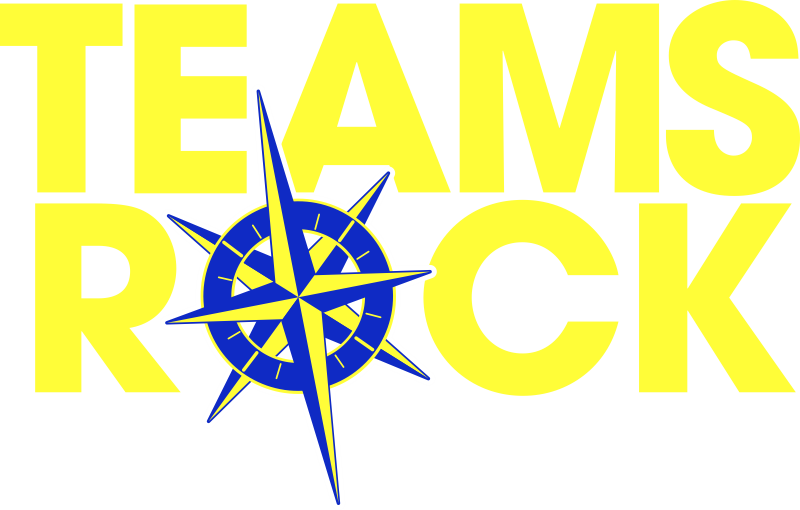One of the biggest challenges managers face is hiring new team members. It’s like placing a bet on red at the roulette table in Vegas; sometimes you get lucky, sometimes you don’t. Sometimes a new member picks up the job functions quickly but never acclimates to the team concept, and thus never becomes a good team player. I think we can all agree that in order to have a successful team, everyone must think like a team. Think of almost any sport; a group of average players can beat a team of superstars, as long as they think and function like a well-oiled machine and truly care about their teammates.
In Jim Collins’s book, Good to Great, he argues that good-to-great leaders understand three simple truths:
- If you begin with “who” rather than “what,” you can more easily adapt to a changing world.
- If you have the right people, the problem of how to motivate and manage people largely goes away.
- If you have the wrong people, it doesn’t matter whether you discover the right direction. You still won’t have a great company.
 Southwest Airlines is one of the nation’s most successful companies, in part because its leaders understand that while you can hire people who can be trained in a job’s skills, it’s much more difficult to teach the attitudes and behaviors that fit a company’s culture. Certain basic job skills are essential, but the right personality, attitude, and values are equally essential to an organization’s success.
Southwest Airlines is one of the nation’s most successful companies, in part because its leaders understand that while you can hire people who can be trained in a job’s skills, it’s much more difficult to teach the attitudes and behaviors that fit a company’s culture. Certain basic job skills are essential, but the right personality, attitude, and values are equally essential to an organization’s success.
Think about professional sports. Many professional sports teams have drafted top college players who went on to be lousy in the professional ranks. In other cases, teams have gotten lucky. But was it luck? In the Disney movie, Miracle, Kurt Russell stars as Herb Brooks, head coach of the gold medal-winning 1980 US hockey team. When his assistant coach asks him why he didn’t select some of the best college players at the time, Brooks tells him, “I’m not looking for the best players, Craig. I’m looking for the right players.” Brooks recognized the importance of team chemistry.
Every leader should think this way. Take the Washington Redskins, for example. Several years ago, the Redskins signed free agent Albert Haynesworth, a well-respected defensive player, and an outstanding athlete. However, he never acclimated to the team, and in many eyes, he failed to live up to his potential, in fact, he’s widely regarded as one of the worst free-agent signings in NFL history. Conversely, think about the Redskins’ decision to draft Heisman Trophy-winner Robert Griffin III (aka RGIII). The Redskins may have drafted him for his Heisman-winning talent, but there’s more to RGIII than athletic ability and a trophy.
During an appearance on The Tonight Show with Jay Leno, RGIII showed a picture of and described the socks he wore at the Heisman Trophy presentation. They were Superman socks, complete with the cape and the iconic Superman logo. As he put it, “I’m just the cape and everyone else on the team are the supermen.” Now that is super language from a super team player.
So, what if you lead an existing team? The challenge then becomes getting your team members to think like RGIII, a true team player, and not like a group of individuals that happen to work together. It begins with the right culture, and that begins with a definition of “team.” We define a team as a group of individuals that support and respect each other and:
- Possesses harmonious or complimentary skills—When teammates work in harmony with each other, their various skills will actually compliment and advance the process or project forward with purpose.
- Are committed to a unified mission—Before members can function effectively together, they must have a common frame of reference.
- Pursues performance objectives on a mutually agreed upon course—It’s not enough to have a common frame of reference; teammates must also agree on the plan, course, and direction to accomplish the task or tasks at hand.
- Where members hold each other accountable—To feel like a team, it’s not enough to simply want to help others; teammates must feel comfortable enough to provide feedback to their peers.
 Once the definition is in place, ask yourself the all-important question: do your team members buy into this definition? If you are fortunate enough to have the majority buy in, then you are well on your way. If the challenge is gaining buy-in, then you need to introduce the concept of true teamwork slowly and methodically. For example, you might want to begin by sharing success stories at team meetings.
Once the definition is in place, ask yourself the all-important question: do your team members buy into this definition? If you are fortunate enough to have the majority buy in, then you are well on your way. If the challenge is gaining buy-in, then you need to introduce the concept of true teamwork slowly and methodically. For example, you might want to begin by sharing success stories at team meetings.
Steve Wynn, the Las Vegas property developer and hotelier, says that all of the teams in his hotels have a brief daily meeting where they share and celebrate a recent success story. “Anything that increases someone’s self-esteem is much more powerful than money,” he said during a recent appearance on CNN’s Piers Morgan Tonight. When team members are committed to raising the self-esteem of their peers, everyone begins to believe in themselves and the team. You cannot have a team until there is team belief.
Once members buy into the concept of a team, each member must begin to think like a team. To be successful, four specific traits are critical:
- Members must be willing to put the team before their personal agendas or accomplishments. This means that while boasting about personal successes can stimulate some people to achieve further success, this behavior may have a reverse effect on others. When everyone sets aside their personal agendas, the team’s energy and morale gets a boost.
- Members must be willing to volunteer for new assignments and tasks. This doesn’t mean that everyone should volunteer for every new assignment, just that team members should volunteer for the assignments that make sense for them and the team.
- Members must be willing to change their personal views to reach a team consensus. Some employees believe their ideas are always right and best for the team. But by taking the time to listen to others and change their views, they actually help the team as a whole become stronger.
- Members must be open to new ideas for the ultimate benefit of the team. One of the biggest challenges teams (and organizations) face today is the idea of, “We’ve always done it this way.” People are naturally resistant to change and sometimes the biggest offenders are a team’s leaders.
As these traits become more entrenched, teams naturally become stronger, more collaborative, and more successful.
Team thinking is truly a multi-pronged approach, and leaders need to recognize how employees think about what they are doing. Look at the following seven levels of team thinking and try to determine where you and each of your team members reside:
- Wait to be told what to do: Like a teenager who has chores and always waits for her parents to tell her to do them, employees sometimes take no initiative and just wait for direction from the team leader before doing anything.
- Make a recommendation and then wait to be told what to do: Employees might recognize that there is an issue that needs to be addressed, but they won’t take action until they’ve been given specific instruction from the team leader.
- Advise and act: As employees gain self-confidence, they will tell others they are going to take action and then actually take it.
- Act and advise: Employees take action and let the team leader know what they’ve done. At this level, employees are seeking validation, which increases self-esteem. If this validation isn’t received, employees tend to revert back to earlier stages.
- Act: Team members simply take action, with no concern for validation. They are comfortable with their teammates and their leader, and, most importantly, in their ability to complete the task for the team.
- Act and consult: While this may sound like level four, this level is not about increasing self-confidence. Rather, it’s about pursuing a certain level of cross-collaboration between departments. When team members work at this level they are communicating and producing more effectively, from an organizational standpoint.
- Acting for the benefit of the team: While frontline employees may not function at this particular level, it is the level where leaders need to be. One of the most difficult tasks for leaders is making decisions that are best for the team and organization, even when those decisions may have a negative impact on specific individuals. These decisions are vital to the team’s success, however difficult they may be.
The challenge for most organizations is that many employees reside at levels two and three, while team success doesn’t begin to occur until team members reach levels four through six. Leaders can help advance their team’s progress through effective delegation, motivation, and recognition.
As team members level up, they become more invested in their team, their teammates, and the organization as a whole. This ultimately results in happier employees, greater productivity, and lower turnover.
In the movie, “Miracle,” Herb Brooks focused on getting his players to think like a team with a unified mission. Since many of the players came from different collegiate teams and, in fact, saw each other as rivals, this was especially difficult. To accomplish his goal, Herb drilled his players mercilessly and made them almost hate him. Once they were united against him, he channeled that energy into learning a new way of playing the game and learning how to think like a team. The result? They beat the long undefeated Soviet team in what went down in sports history as the “Miracle on Ice.”
Thinking like a team is the foundation of success. Only when that foundation is solid can a team focus on achieving its vision and mission.

